Missouri farmers made some significant harvest progress last week, especially with soybeans. According to USDA, Missouri’s corn harvest increased 13 percent last week to 62 percent complete and farmers harvested 31 percent of the soybeans in the state last week, up to 64 percent complete as of Sunday.
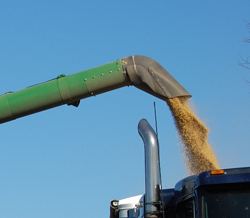 We saw some of that progress being made in the state last week on our BASF Headline Harvest Report visits. Terry Smith in Chillicothe, Missouri was just about finished with his soybean harvest when Chuck visited with him on Wednesday last week. “We’ve been slow off and on because of the weather, but the early beans we got out helped a lot. They were ready early and the weather was better.”
We saw some of that progress being made in the state last week on our BASF Headline Harvest Report visits. Terry Smith in Chillicothe, Missouri was just about finished with his soybean harvest when Chuck visited with him on Wednesday last week. “We’ve been slow off and on because of the weather, but the early beans we got out helped a lot. They were ready early and the weather was better.”
This is the first year Terry has used Headline fungicide on his beans and he saw a nine bushel yield bump. “The plants were healthy, they grew a little taller. When they yield nine more bushels, that’s significant,” he said.
Here is a YouTube video of Chuck’s interview with Terry and some shots of him harvesting beans.


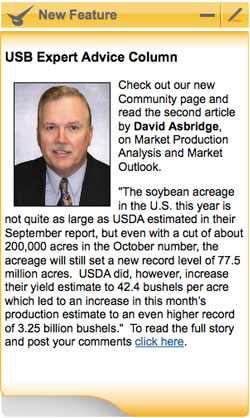 Welcome new AgWired sponsor,
Welcome new AgWired sponsor, 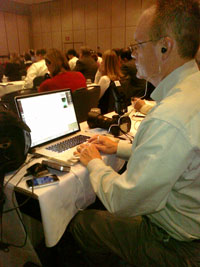 Thanks to John Walter,
Thanks to John Walter, 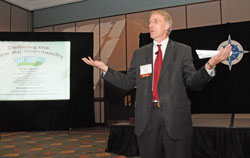 Our opening keynote speaker at the NAMA Trends In Agriculture conference is David Kohl, Professor Emeritus, Agricultural Finanace and Small Business Management, Virginia Tech and President, AgriVisions, LLC. His topic is “Defining the New Ag Community.”
Our opening keynote speaker at the NAMA Trends In Agriculture conference is David Kohl, Professor Emeritus, Agricultural Finanace and Small Business Management, Virginia Tech and President, AgriVisions, LLC. His topic is “Defining the New Ag Community.”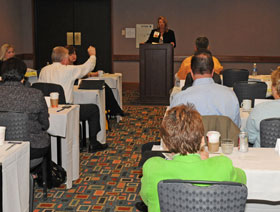 The NAMA Trends In Agriculture Conference is underway in KC, MO at the Hyatt. The first order of business was the board meeting. You can see NAMA President-Elect Susie Decker,
The NAMA Trends In Agriculture Conference is underway in KC, MO at the Hyatt. The first order of business was the board meeting. You can see NAMA President-Elect Susie Decker, 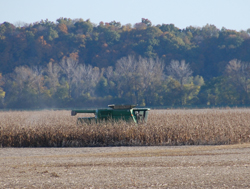 Corn production is forecast at 12.9 billion bushels, down 1 percent from last month but 7 percent higher than 2008. Based on conditions as of November 1, yields are expected to average 162.9 bushels per acre, down 1.3 bushels from October but 9.0 bushels above last year. Despite the drop in yield from October, this yield will be the highest on record if realized. Total production will be second highest on record, only behind 2007. Within the Corn Belt, forecasted yields in Minnesota and Wisconsin increased, while Illinois, Iowa, and Michigan yields decreased.
Corn production is forecast at 12.9 billion bushels, down 1 percent from last month but 7 percent higher than 2008. Based on conditions as of November 1, yields are expected to average 162.9 bushels per acre, down 1.3 bushels from October but 9.0 bushels above last year. Despite the drop in yield from October, this yield will be the highest on record if realized. Total production will be second highest on record, only behind 2007. Within the Corn Belt, forecasted yields in Minnesota and Wisconsin increased, while Illinois, Iowa, and Michigan yields decreased. Last week, I was watching the Ellen DeGeneres Show because I knew she would be interviewing Jonathan Safran Foer, the author of “Eating Animals,” a gruesome attack against animal agriculture and a strong testimony for a vegan lifestyle. Recently, the National Pork Board responded to Foer’s statements, especially when he falsely linked H1N1 to a hog farm in North Carolina. Read on to learn more about this ongoing debate. To read the entire article and watch the video, link to the
Last week, I was watching the Ellen DeGeneres Show because I knew she would be interviewing Jonathan Safran Foer, the author of “Eating Animals,” a gruesome attack against animal agriculture and a strong testimony for a vegan lifestyle. Recently, the National Pork Board responded to Foer’s statements, especially when he falsely linked H1N1 to a hog farm in North Carolina. Read on to learn more about this ongoing debate. To read the entire article and watch the video, link to the  Head into a grocery store these days and consumers are offered aisles upon aisles of food choices. It’s been said that annually, food producers raise enough food to feed 144 people. With this efficiency, consumers can enjoy their favorite foods in abundance. As a result of our food surplus, new food options have become available, and as a result, conventional agriculture is under attack in favor of natural, organic and locally grown options. While I think it’s great and noble that consumers are trying to do better for themselves and the environment, I believe sometimes these food claims can be misleading. Apparently, others agree with me, as well.
Head into a grocery store these days and consumers are offered aisles upon aisles of food choices. It’s been said that annually, food producers raise enough food to feed 144 people. With this efficiency, consumers can enjoy their favorite foods in abundance. As a result of our food surplus, new food options have become available, and as a result, conventional agriculture is under attack in favor of natural, organic and locally grown options. While I think it’s great and noble that consumers are trying to do better for themselves and the environment, I believe sometimes these food claims can be misleading. Apparently, others agree with me, as well.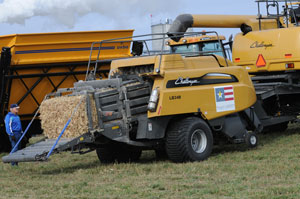 AGCO is one of the companies working on a
AGCO is one of the companies working on a 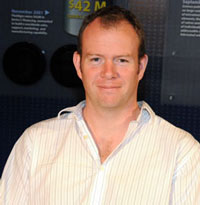 When it comes to research and development at
When it comes to research and development at